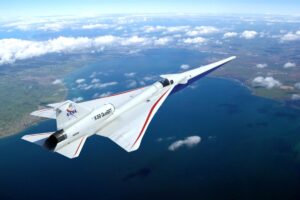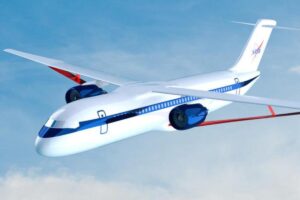Serial to Synchro Converters: Streamlining Data Translation
Table of Contents
- Introduction
- Overview of Serial to Synchro Converters
- Importance in Aerospace and Defense
- Objective of this White Paper
- Fundamentals of Data Translation
- The Need for Synchro Conversion
- Serial Data Communication in Modern Systems
- Key Differences Between Serial and Synchro Signals
- How Serial to Synchro Converters Work
- Signal Processing and Conversion Techniques
- Core Components of a Serial to Synchro Converter
- Digital-to-Analog Signal Processing
- Key Features of Serial to Synchro Converters
- High Accuracy and Precision
- Real-Time Data Translation
- Robust Error Detection and Correction
- Wide Range of Input and Output Compatibility
- Applications in Aerospace and Defense
- Avionics Systems
- Radar and Navigation Systems
- Missile and Weapons Control
- Satellite Communication and Space Exploration
- Comparison with Other Data Conversion Methods
- Serial to Parallel Conversion
- Synchro to Digital Conversion
- Alternative Signal Translation Techniques
- Challenges and Limitations
- Precision Limitations in Harsh Environments
- Cost and System Integration Constraints
- Power Consumption and Efficiency Considerations
- Best Practices for Implementing Serial to Synchro Converters
- Selection Criteria for Aerospace and Defense Applications
- Ensuring System Compatibility and Calibration
- Testing and Certification Requirements
- Future Trends and Advancements
- Innovations in Signal Processing Technologies
- Next-Generation Aerospace Communication Systems
- The Role of AI and Machine Learning in Data Conversion
- Conclusion
- Recap of Key Insights
- Final Thoughts on Future Developments
1. Introduction
Overview of Serial to Synchro Converters
Serial to synchro converters serve as crucial components in modern aerospace and defense systems, enabling seamless data translation between digital and analog formats.
Importance in Aerospace and Defense
These converters facilitate high-precision control mechanisms, ensuring reliable and accurate communication between digital avionics and legacy synchro-based systems.
Objective of this White Paper
This document explores the technical aspects, applications, challenges, and future trends of serial to synchro converters, providing a comprehensive understanding of their role in advanced communication systems.
2. Fundamentals of Data Translation
The Need for Synchro Conversion
Synchro signals are widely used in military and aerospace applications for accurate position and control feedback, necessitating efficient data conversion solutions.
Serial Data Communication in Modern Systems
Serial data transmission provides a reliable and efficient method for digital communication, supporting high-speed data flow with minimal wiring complexity.
Key Differences Between Serial and Synchro Signals
Serial signals use digital transmission, whereas synchro signals rely on analog voltage variations to represent angular position data, making conversion necessary for interoperability.
3. How Serial to Synchro Converters Work
Signal Processing and Conversion Techniques
These converters use a combination of digital signal processing and analog conversion methods to translate serial data into synchro-compatible output.
Core Components of a Serial to Synchro Converter
Key components include microcontrollers, digital-to-analog converters (DACs), amplifiers, and precision transformers for generating synchro signals.
Digital-to-Analog Signal Processing
The system interprets serial digital data, converts it into an analog signal, and then conditions it for synchro system compatibility.
4. Key Features of Serial to Synchro Converters
High Accuracy and Precision
Modern converters provide minimal signal distortion and high-resolution outputs, ensuring precise control and feedback.
Real-Time Data Translation
Low-latency processing allows real-time communication between digital and analog systems, critical for mission-critical applications.
Robust Error Detection and Correction
Advanced algorithms detect and correct signal errors to enhance reliability in high-stress environments.
Wide Range of Input and Output Compatibility
Converters support various input data formats and output voltage levels, making them adaptable to different system architectures.
5. Applications in Aerospace and Defense
Avionics Systems
Used in cockpit instrumentation and flight control systems, ensuring precise data integration between digital displays and legacy synchro-based sensors.
Radar and Navigation Systems
Enable accurate position tracking and orientation adjustments in radar and satellite navigation systems.
Missile and Weapons Control
Provide essential signal translation for targeting and guidance systems in military applications.
Satellite Communication and Space Exploration
Ensure reliable data exchange between spacecraft control systems and ground stations.
6. Comparison with Other Data Conversion Methods
Serial to Parallel Conversion
Focuses on converting serial data streams into parallel formats but does not offer the angular precision needed for synchro-based applications.
Synchro to Digital Conversion
The inverse of serial to synchro conversion, this method translates synchro analog signals into digital data.
Alternative Signal Translation Techniques
Other techniques include resolver-to-digital conversion and direct analog processing for specific use cases.
7. Challenges and Limitations
Precision Limitations in Harsh Environments
Environmental factors such as temperature variations and electromagnetic interference can impact signal accuracy.
Cost and System Integration Constraints
Implementing high-precision converters involves significant cost and complexity, particularly in retrofitting legacy systems.
Power Consumption and Efficiency Considerations
Optimizing power consumption while maintaining high performance is a key challenge in aerospace applications.
8. Best Practices for Implementing Serial to Synchro Converters
Selection Criteria for Aerospace and Defense Applications
Factors such as accuracy, compatibility, and environmental resistance must be considered when choosing a converter.
Ensuring System Compatibility and Calibration
Proper calibration and system alignment are essential for achieving optimal performance.
Testing and Certification Requirements
Regulatory standards and rigorous testing ensure reliability and safety in mission-critical applications.
9. Future Trends and Advancements
Innovations in Signal Processing Technologies
Advances in digital signal processing and microelectronics are enhancing converter efficiency and performance.
Next-Generation Aerospace Communication Systems
Integration with modern avionics architectures is driving the evolution of data conversion solutions.
The Role of AI and Machine Learning in Data Conversion
AI-driven algorithms are being explored for optimizing signal translation and predictive maintenance in aerospace systems.
10. Conclusion
Recap of Key Insights
Serial to synchro converters are vital for integrating digital and analog systems, providing high accuracy and real-time data translation.
Final Thoughts on Future Developments
As technology advances, improved conversion techniques and AI integration will further enhance system reliability and efficiency in aerospace and defense applications.





